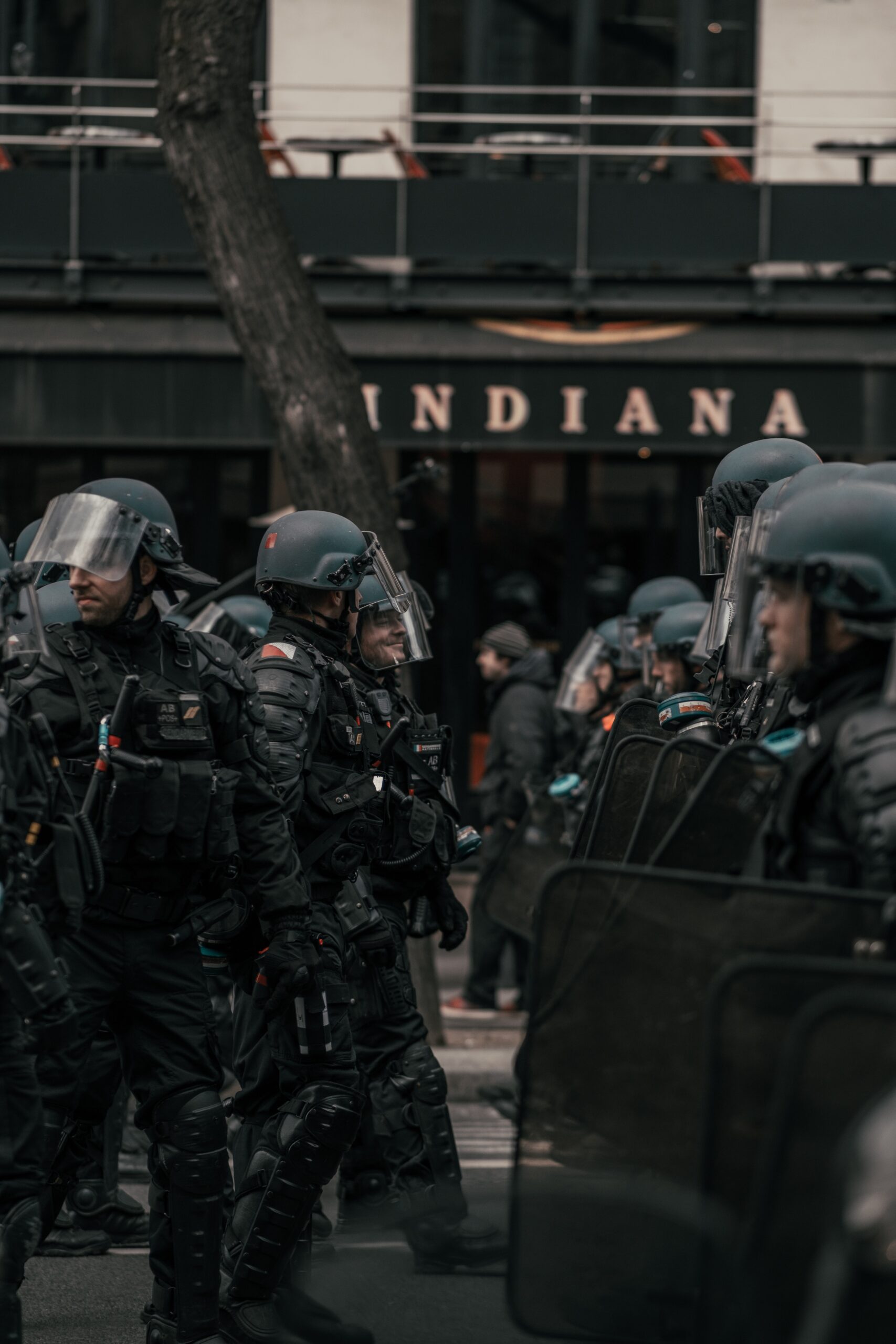During the riots in the Republic of Ireland in the 1960s and 1970s, law enforcement officers did not use police riot gear. Army personnel responding to a demonstration at Curragh decided to deploy bayonets rather than riot shields even though the shields were readily accessible. During a disturbance that occurred in Lifford, there was a lack of readily available riot shields, which led to nine members of the Garda Sochána receiving injuries. Following reports of a fight breaking out in Monaghan, 44 soldiers with only five riot shields made their way to the location of the incident. In 1972, to find a solution to the problem, the city of Dublin manufactured two hundred riot shields.
The riot shield is an essential part of police riot gear. In most cases, the thickness of a riot shield ranges from 4 millimeters to 6 millimeters (0.16-0.24 in). Shields are designed to endure the impact of being broken, but they are not bulletproof. Some anti-riot shields are resistant to bullets from handguns and shotguns, which have a lower muzzle velocity than rifle rounds. The length of a shield might be anything from 36 to 48 inches (91 to 122 centimeters), and its width can be anywhere from a few inches to several feet. If it is utilized properly, a riot shield may protect a person from the head down to the knees.
Many shields have a slightly cylindrical shape, and their handles can be made of metal or reinforced metal plastic. The handles are usually fastened to the shield with adhesive or grommets. The handle of the shield will be constructed such that the user can grip it with a closed fist, and the area where the forearm rests on the shield will be bolstered with padding and secured with Velcro straps to keep the forearm in place. There are multipurpose shields that embody the role of two police riot gear (riot shield and taser). Electric shields can provide a non-lethal electric shock to anyone that encounters it. There are also concave shields designed expressly for holding down rioters or detainees before handcuffing them.
For more articles, please click here.
